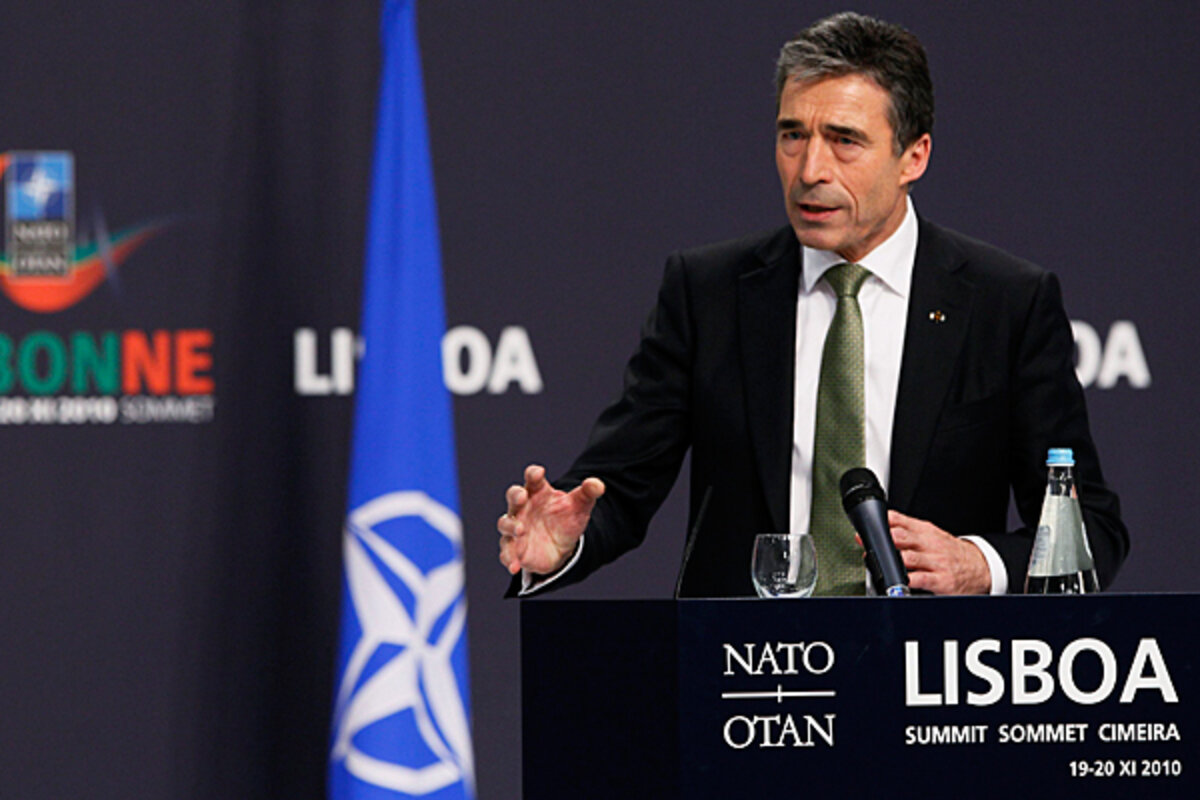NATO targets terrorism, cybersecurity as central to 21st century mission
Loading...
| Lisbon, Portugal
NATO on Friday adopted a ‚Äúplan of action‚ÄĚ for 21st-century security threats that draws on both the recent lessons of Afghanistan and the alliance‚Äôs longer experience with defense by deterrence.
The new ‚Äústrategic concept,‚ÄĚ which is NATO's first mission statement in more than a decade, elevates the role of political and civilian answers to security challenges. For the first time, for example, the military alliance will create a small civilian component to assist the military side in future interventions such as the one in Afghanistan.
But the 11-page statement, which is concise by NATO standards, also makes clear that the Atlantic alliance will maintain its nuclear deterrent to ward off conventional threats even as it adapts to face newer challenges like cybersecurity, terrorism, and failed states.
Related: New Afghan war plans could cost US taxpayers an extra $125 billion
‚ÄúThis is NATO‚Äôs road map for the next 10 years,‚ÄĚ said NATO Secretary General Anders Fogh Rasmussen. As if to answer skeptics who have predicted for months that this year‚Äôs summit would actually mark NATO‚Äôs retreat to irrelevance, Mr. Rasmussen added, ‚ÄúThis strategic concept will ensure that NATO remains as effective as ever.‚ÄĚ
Despite a backdrop of falling defense budgets in many of NATO‚Äôs member states, Rasmussen said NATO will maintain its security function and adopt new tasks by becoming more efficient and pooling resources better. He held up a recent Franco-British accord for coordinating defense functions and sharing military hardware as an ‚Äúexcellent example‚ÄĚ of how members can ‚Äúmake better use‚ÄĚ of what they have collectively.
Questions about the future of American nuclear weapons in NATO’s European countries had threatened to upend a smooth adoption of the new mission statement, which has been in the works for more than a year.
Germany leads a group of countries that wanted any go-ahead on a European missile-defense system to be linked to a commitment to remove nuclear weapons, which some European leaders and experts consider outdated and a dangerous presence in a post-conventional-warfare era. These countries favored a stronger plan for meeting President Obama’s goal of a world rid of nuclear weapons.
"In an astonishing demonstration of weakness, NATO heads of state have failed to tackle the cold war legacy of the deployment of US nuclear gravity bombs in Europe, threatening the credibility of NATO members' claims to be interested in nonproliferation and global disarmament," said Paul Ingram,executive director of the British American Security Information Council in London.
Yet while the mission statement does speak of a missile-defense system, it also maintains the deployment of nuclear weapons as a pillar of the alliance‚Äôs defense. ‚ÄúAs long as there are nuclear weapons in the world, NATO must remain a nuclear alliance,‚ÄĚ Rasmussen said.
NATO officials said they expect the leaders assembled in Lisbon to adopt plans for a missile-defense system that protects the alliance’s European territory and populations.
The influence of the alliance’s nine-year-old engagement in Afghanistan is present in several parts of the mission statement, from acknowledgment that military interventions can no longer be the sufficient answer to global security challenges to inclusion of political elements in any crisis response from the outset and not just in a later transitional phase of an intervention.
Rasmussen, who often cites NATO’s belated effort to train Afghan security forces as an example of what should not happen, says Afghanistan has presented the alliance with numerous lessons for the 21st century.
‚ÄúThis strategic concept,‚ÄĚ he said, ‚Äúshows we have learned them."




